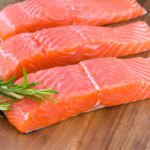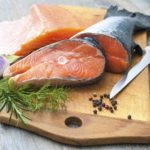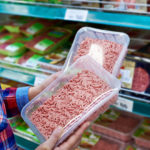Plastics In Fish?
Is it true that all the plastics that go into the oceans are ending up in the fish we eat? Does that pose a threat to health? If so, what can we do about it?
Andrew Weil, M.D. | April 20, 2018

You’re referring to microplastics, which come from larger plastic debris that degrades into very small pieces. Microbeads, the smallest of these, are five millimeters or less in diameter. They have been used for about 50 years in health and beauty products, including some skin cleansers and toothpastes. These tiny particles are too small to be filtered out of wastewater and end up in the oceans or other bodies of water, where fish can mistake them for food.
A study published in February 2018 found microplastics in the stomachs of 73 percent of seven species of mesopelagic fish caught in the Northwest Atlantic. These fish live very deep in the oceans but swim to the surface at night to feed. Mesopelagic fish spread microplastic pollution throughout the marine ecosystem by carrying particles from the surface to deeper waters where they can affect deep-sea organisms. When ingested, microplastics can cause inflammation, reduced feeding and weight-loss in deep-sea fish and these problems can spread to bigger fish such as tuna and swordfish that eat smaller ones. Worse, since microplastics can bind to chemical pollutants, they increase accumulation of toxins in the larger fish.
A British study published in 2013 found microplastics in the gastrointestinal tracts of 36.5 percent of fish caught in the English Channel. The authors concluded that further work is needed to establish effects on human health.
Clearly, microplastics can end up in the seafood we eat. Researchers have found plastic in whales, mussels and oysters; one study showed that the number of microplastic fragments in oysters averaged 177. While we have no evidence at this time that microplastics we may consume when eating fish or other food pose a threat to human health, we should assume there is a potential for harm.
The threat that plastic in the environment presents is worldwide, on land as well as in the sea. In the Middle East, plastic trash has been killing camels. The animals can’t digest plastic; it accumulates in the stomach, discouraging eating. It is estimated that one out of every two camels in the United Arab Emirates dies of plastic consumption. An autopsy revealed 52 kilos (114.6 pounds) of plastic bags, nylon twine and rope in one camel’s stomach.
A U.S. law passed in 2015 prohibits the manufacturing, packing and distribution of rinse-off cosmetics, toothpastes and other products containing plastic microbeads. The law began to take effect in 2017 and is scheduled to become fully in force on July 1, 2019. Several states already have banned products containing microbeads, and reportedly, some foreign governments are planning similar action. In the meantime, you can get a smartphone App called “Beat the Microbead” that lets you scan product bar codes to see which ones contain microplastics.
Andrew Weil, M.D.
Source:
Alina M. Wieczorek et al, “Frequency of Microplastics in Mesopelagic Fishes from the Northwest Atlantic.” Frontiers in Marine Science, February 19, 2018, doi.org/10.3389/fmars.2018.00039












